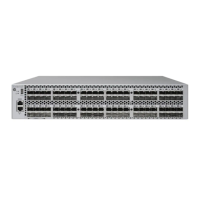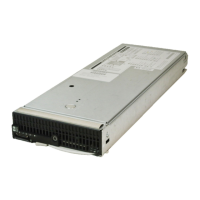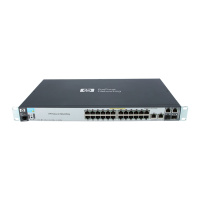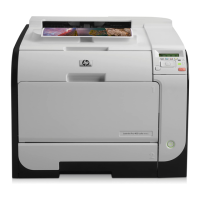
Do you have a question about the HP StoreFabric SN6500B and is the answer not in the manual?
Introduces the Fabric OS CLI, Role-Based Access Control (RBAC), and command syntax conventions.
Explains how to change default account passwords after initial login or subsequent logins.
Provides procedures for graceful shutdowns of Brocade switches and Backbones to avoid file system corruption.
Explains how to audit specific event classes to view and generate an audit log for switch security events.
Explains how to control routes using port-based or exchange-based routing policies.
Details password strength, history, expiration, and account lockout policies.
Covers RADIUS, LDAP, and TACACS+ services for user authentication and authorization.
Provides an overview of security protocols like HTTPS, IPsec, LDAPS, SCP, and SNMP.
Details Secure Shell (SSH) encrypted sessions, including public key authentication.
Explains Secure Sockets Layer (SSL) for secure access to management tools like Web Tools.
Introduces Access Control List (ACL) policies like FCS, DCC, SCC, and IPFilter.
Details Fabric Configuration Server (FCS) policies for restricting switch configuration changes.
Explains Device Connection Control (DCC) policies to restrict device port connections to switch ports.
Describes DH-CHAP, FCAP, and other authentication protocols for fabric elements.
Covers IP Filter policies for packet filtering on management interfaces and creating/deleting rules.
Details securing Ethernet management interfaces using IPsec and IKE policies.
Discusses maintaining consistent configuration settings for fabric segmentation.
Recommends keeping backup configuration files for switches and avoiding copying across models.
Explains how to overwrite existing configurations with previously saved backup files.
Details using configUpload -vf or configDownload -vf to restore configurations to a logical switch.
Provides an overview of nondisruptive firmware installation for Brocade DCX and DCX 8510 Backbones.
Lists preparatory tasks for firmware download to provide information for troubleshooting.
Guides users on how to test and restore firmware versions on switches.
Provides steps to enable Virtual Fabrics mode, which reboots CPs and disables EX_Ports.
Guides on enabling bottleneck detection for latency and congestion on eligible ports.
Explains configuring per-port alerts based on latency and congestion history with thresholds.
Details configuring encryption, compression, or both on E_Ports and EX_Ports.
Details setting the number of virtual N_Port_IDs per port and enabling/disabling NPIV.
Details using the faPwwn command to create and manage FA-PWWNs, including binding and deleting.
Provides guidance for physical fabric administrators on managing Admin Domains.
Details enabling 10 Gbps operation on FC ports and 10-GbE ports using the 10G license.
Explains purchasing and activating unlicensed ports up to device-constrained maximums.
Identifies top bandwidth-consuming flows and allows QoS attribute configuration.
Restricts traffic speed from a device to a switch port, requiring an Adaptive Networking license.
Allows categorizing traffic flow by priority using CS_CTL or QoS zone-based prioritization.
Prioritizes frames based on CS_CTL field, allocating fabric resources accordingly.
Assigns priority to traffic flow based on QoS zone names, allocating fabric resources.
Discusses buffer credit management for allocating sufficient credits for long-distance traffic.
Discusses how FC-FC routing behavior changes when Virtual Fabrics is enabled.
Details enabling FIPS mode, self-test mode, and prerequisites for compliance.
Outlines restrictions and steps for preparing a switch for FIPS mode.











